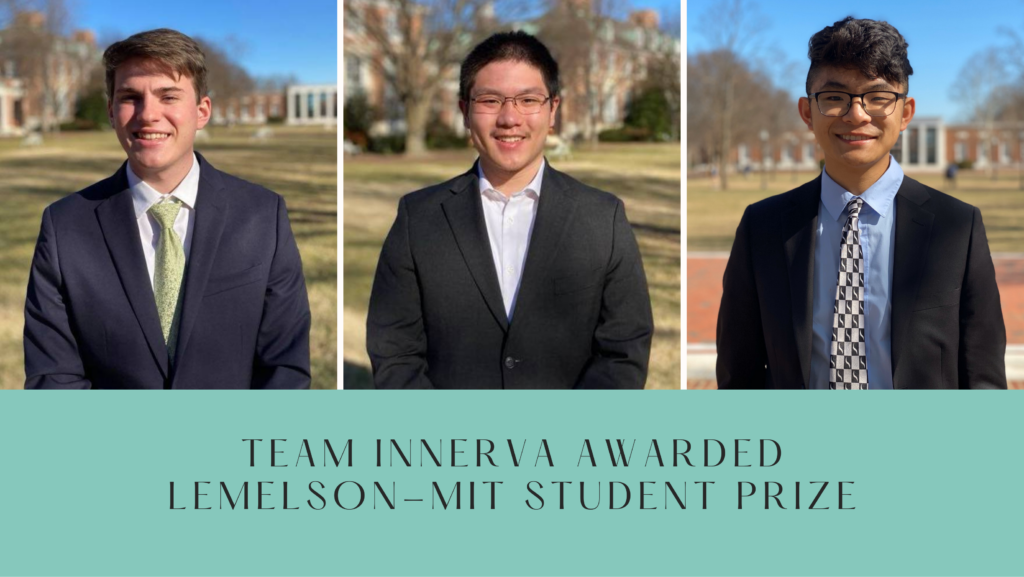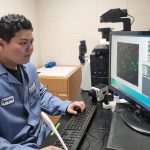Team Innerva Awarded Lemelson-MIT Student Prize

Story by Amy Weldon and was originally posted on the Department of Material Science and Engineering website.
Three undergraduate students from the Department of Materials Science & Engineering and the INBT have been awarded with the 2021 Lemelson-MIT Student Prize. Michael Lan, Anson Zhou and Bruce Enzmann make up the Innerva team whose device, a cone-shaped conduit device made of an outer synthetic polymer cylinder and an inner hydrogel, could help patients suffering from peripheral nerve damage. The team was awarded the $10,000 “Cure it!” Lemelson-MIT Student Prize for their work, and the second major honor this year for group member Bruce Enzmann, a junior, who was recently named a Goldwater Scholar.
According to the Innerva team, 20 million people in the U.S. are living with peripheral nerve injuries, the most severe of which are caused by amputations. During the recovery process after an amputation, the severed nerve cells often grow back in a disorganized way, forming cell clusters that generate non-cancerous, but very painful tumors known as neuromas. The discomfort these neuromas can cause is debilitating for the patient and seriously impede a patient’s recovery and overall wellbeing. This results in the prescription of pain medications and sometimes follow-up surgeries and recovery time which can cost the patient tens of thousands of dollars in medical expenses alone.
Currently, there is no technology or treatment that can offer patients relief by promoting functional peripheral nerve regeneration and preventing the formation of the painful neuroma. While targeted muscle reinnervation (TMR) is a promising approach to amputation in which surgeons stitch the severed nerve to smaller motor nerves, there is a considerable disparity in size between the two nerve types, and the remaining disorganized axons can continue to grow and form neuromas. The Innerva team’s solution is a cone-shaped, biodegradable device that bridges the gaps between nerves of different sizes and can be implanted within TMR.
“Nerve injury has always been at the forefront of our research goal to decrease patient pain,” said Lan. “We are excited to be at the forefront of cutting-edge research to develop these translational therapies.”
The team is mentored by DMSE professor and Institute of NanoBioTechnology associate director Hai-Quan Mao, together with Dr. Sami Tuffaha, a faculty surgeon in Department of Plastic and Reconstructive Surgery, and Dr. Ahmet Hoke, professor of neurology and neuroscience, and affiliated faculty of INBT, The team is one of only three nationally to receive the Lemelson-MIT undergraduate student prize. This is the second year that a Hopkins Engineering student team winning Lemelson-MIT prize; the DMSE undergraduate team Augeo also winning last year’s “Cure it!” student prize.
“We are incredibly honored and would like to thank all of our advisors who have helped us with this project,” Lan said.
Learn more about the award, this year’s Lemelson-MIT winners and the Innerva device here.





